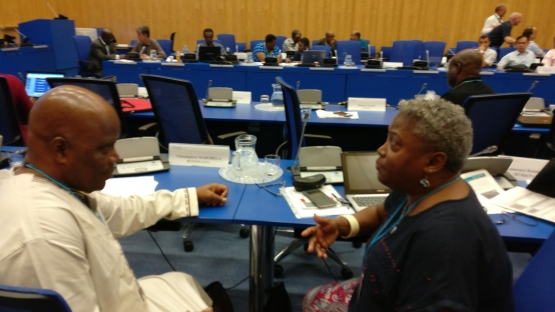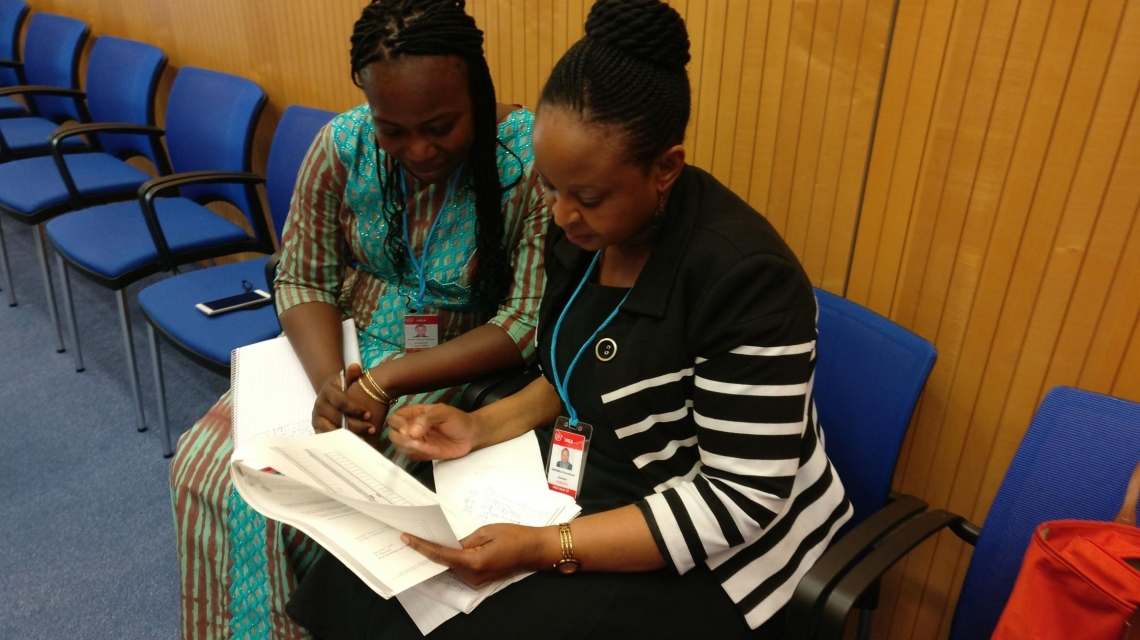Ways to strengthen animal disease diagnosis capabilities in Africa and Asia were in focus at the IAEA earlier this month. Improving laboratories’ proficiency in rapid detection, enhancing quality control, and sharing and verifying standard operating procedures were discussed at the coordination meeting of the VETLAB Network, hosted at IAEA headquarters from 6-10 August.
Animal diseases that have the potential to spread across borders, known as transboundary diseases, or from animals to humans, known as zoonotic diseases, have serious public health and economic consequences. Therefore, preventing them is an important goal of veterinary agencies around the world. Nuclear and nuclear-derived techniques play an important role in the diagnosis of these diseases, offering much quicker diagnosis than other methods.
National animal disease diagnostic laboratories of 44 African and 19 Asian countries are participating in the VETLAB Network, facilitated by the IAEA in cooperation with the Food and Agriculture Organization of the United Nations (FAO).
“We have challenges in terms of quality control and are implementing proficiency tests to set International Organization for Standardization (ISO) standards,” said Awuni Joseph Adongo, Director of the Accra Veterinary Laboratory in Ghana. “The Joint FAO/IAEA Division of Nuclear Techniques in Food and Agriculture has helped to upgrade our labs, sharing up-to-date information in testing procedures and quality control, which has benefitted my country to rapidly improve early detection of animal diseases.”
The coordination meeting covered a range of topics on diagnostics techniques for disease control, national proficiency test methodologies, the latest developments in the fight against the peste des petits ruminants (PPR), through technology transfers and the collaboration among VETLAB network members. PPR is a highly contagious virus disease that can spread rapidly through entire regions, killing thousands of sheep and goats per year.
Participants learned about the latest advances in immunological and molecular diagnostic techniques that use isotopic labelling to trace, monitor and characterize transboundary animal and zoonotic diseases and about the enzyme-linked immunosorbent assay and polymerase chain reaction, the two most commonly used nuclear-derived techniques that provide high sensitivity and specificity for identifying pathogens.
“Countries have different environments and challenges in fighting animal diseases, and at the VETLAB meetings, we learn about the advances made in harmonizing lab procedures for early detection, which helps to prepare for swift responses to protect both animals and people,” said Sara Juma Achá, Head of the Central Veterinary Laboratory of Mozambique.
Country presentations reflected efforts to implement programmes that addressed biosecurity and biosafety, the kinds of surveillance in place and how laboratories play a key role in identifying major outbreaks of animal and transboundary diseases.
In these presentations, delegates provided updates on tracking and screening programmes for possible animal diseases, the kind of inoculations available for animals to protect them from virulent diseases that can kill such as rabies, PPR and brucellosis, which spreads from animals to humans and causes intense joint and muscle pain. Participants provided national updates on molecular and serological characterization as well as the production of national molecular standards to promote animal production and health.
Participants agreed that getting the laboratories’ information to stakeholders in a timely manner was key for rapid action to be taken to prevent and control the spread of animal diseases.
Improving information sharing through the VETLAB Bulletin and future VETLAB websites, and to formulate a common workplan to meet the overall goals of this network at the national, regional and global levels is vital, said Ivancho Naletoski, an animal health specialist at the Joint FAO/IAEA Division.






